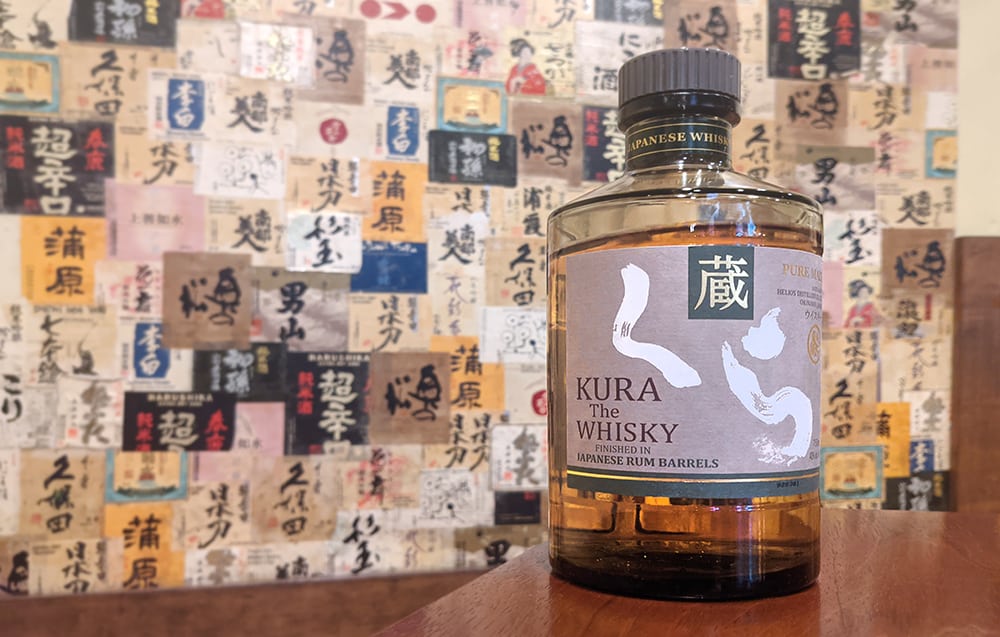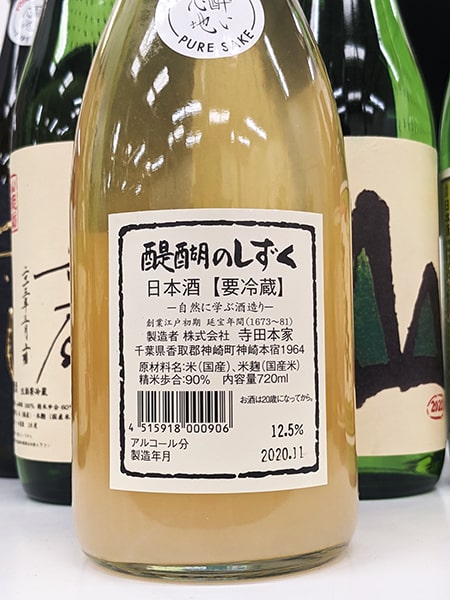For years, I’ve told myself not to. And the white-hot rage I received on simple social media posts were added deterrents. Yet this week, I created a post about one of those controversial “Japanese whiskies”.
No, it’s not a Kurayoshi. It’s little old Kura the Whisky from Helios. The reality is that people are searching for info on this product. And when I started searching too, I learned a little bit, and it wasn’t all bad.
It was also a light week on the news side of things. But a few new products hit the market that are worth knowing about. And finally, a sake Karen happened, and I feel compelled to rant a little. I save this last bit for the end.

Kura the Whisky Review
Kura the Whisky Rum Cask Finish is a controversial bottling from Okinawa’s Helios (rum) Distillery.
Is it Japanese whisky? Find out, plus learn what it tastes like and how much it costs. Click the button below to dive in!
Snake River Farms: Build Your Own Beef & Pork Box!
Buy 6 or more items get $25 off
Coupon ends tomorrow, October 10, 2021!
As an affiliate for Snake River Farms, I earn commissions on qualifying purchases.
Follow the Japanese Bar on Social Media
Connect with our latest posts, the newest Japanese beverage info, and get exclusive promotional offers. Level up your Japanese food and beverage IQ!
Japanese Food & Beverage: the Best of the Internet
New Koji Spirits Made in Georgia
I just stumbled across a press release about a new koji-based spirit brand called Horyzon. And it looks pretty cool.
They’re using an heirloom strain of rice from South Carolina, some rice out of Arkansas, and black koji. They also go the honkaku route with only one distillation, but they do it in a copper pot still. So far so good.
Horyzon currently has two products. Harvest Select is steel-aged and clear. It’s bottled at 40% abv. And Southern Blend is aged in new American Oak and bottled at 45% abv. This product will be released in early 2022.
We do not have many options for undiluted (genshu) shochu in the US. So needless to say, I’m dying to try these!
Rather than link to the press release, I’ll direct you to Horyzon Spirit’s website. They have some good information about their Georgia shochu.
Good Sake, Good Ramen
Daiichi Shuzo Kaika of Tochigi has been brewing for 348 years. And last year they released a new sake called Noodle Sake Haruka Akifuyu, which is designed to go well with ramen.
The sake was a hit, and so they’re brewing it again and with an ambitious goal.
“We want this to become a sake that ramen restaurants around the world will serve, as a matter of course, five, or even 100, years from now.”
They have a cool one cup design and aren’t afraid to dream big. I hope they succeed.
Get the scoop on Noodle Sake from Sora News 24.
Boutique-y’s Crazy World Whisky Blend
Boutique-y makes some of the coolest whiskies on the planet. They’ve previously released some extremely expensive and highly sought-after Japanese whiskies. And they recently launched an affordable World Whisky blend in the UK.
Learn the details of Boutique-y Out of This World Whisky Blend from News Nation USA.

Sake Education from Karen
True experts are rare. And those that do exist probably don’t call themselves one.
The reason for this is because that there’s almost always something new to learn. And this is certainly true of a complex subject like sake and sake brewing.
When I was starting out, I had just enough knowledge to think I was a pro. But the more I learned, the more I realized there was to learn.
But natural wine writer Alice Feiring clearly has a lot to learn about sake and doesn’t know it yet. Take a look at her misguided post on Afar, and you’ll probably see what I’m alluding to. She has just enough knowledge to be dangerous but is quite off the mark.
And maybe I’m a little triggered by the hardcore natural wine folks. I’m a Certified Sommelier and worked as a floor somm for years. I love all kinds of wine, and I’ve encountered a number of diehards that seem to think natural wine is the only true wine. And it ain’t. Oftentimes, I find this ideology coming from those that have never studied or explored the great big and ancient world of wine. So yeah, I get triggered.
Of course, I have some thoughts on the author’s bold claims. And she does open up a conversation about a loose category of sake that I personally really enjoy. So let’s get into it.
Pure Sake?
I’ll start with the obvious. The author doesn’t understand junmai. Pure rice sake by itself does not equal pure sake, natural sake, or whatever. There’s some great honjozo/aruten-shu out there. And if you’re reading this newsletter you know that too. I assume she conflates “pure rice” for something more than it really is.
Tamanohikari reintroduced junmai sake in 1964. And they were not making this in a vacuum over the last 57 years. Yes, Akishika is a pioneer in junmai sake too, and it’s true there were some dark years for sake after the war. Today, there’s still a lot of futsu-shu and worse being made in Japan. But if you live outside of Japan, junmai sake is significantly more prevalent than alcohol-added styles.
“Junmai-shu makers faced a lonely battle until 2013.” That is, until importers of natural wines stepped in, or so the author claims. What a joke.
“In 2015, junmai-shu finally had its moment: René Redzepi introduced some at the Tokyo pop-up for his legendary Copenhagen restaurant Noma, pushing pure sake into the international spotlight.” Really?! Without question, this is the dumbest thing I’ve ever read about sake.
Natural Sake?
Is “natural sake” a thing? Sure, I’d say it’s being done. The author highlights some of the breweries imported by Yoigokochi Sake Importers, and many of their products fit the bill. And I really like these brands. Akishika is one of my favorite producers. Mukai is solid too. And yes, Terada Honke is outstanding.
So I guess I’m cooling off a bit.
A bunch of boxes need to be checked to make “natural sake,” by the way. And this is strictly my opinion.
One of them is native fermentation, which is exceedingly rare in the sake world. But Kenbishi has been doing it for a long time. Tamagawa is another major producer in this arena. And I can list more.
Producing lactic acid naturally is another consideration. The kimoto, yamahai, or bodaimoto methods will do the trick. Or you can go the Kidoizumi route and cultivate your own lactic acid bacteria on top of their crazy yamahai method.
Unpasteurized sake is another element of what I hesitate to call “natural sake.” So is the lack of charcoal filtration. Neither of these are hard to find.
As for organic rice, it’s a tricky subject. In 2020, roughly 31 breweries were using JAS-certified organic rice. I think most brewers would prefer to use it. It’s good for the local community and a return to the old ways of doing things.
But it’s not so simple, because it’s very expensive and difficult to grow. There’s a lot of risk on the farmer’s end, and it takes a lot of skill too. And organic rice doesn’t mean quality, either. Most of the organic rice used for sake is table rice, because it’s easier to sell if there’s a good harvest.
“Natural sake” probably isn’t made with additives, so sure, it probably going to be junmai. Unless you’re a producer like Tsukinowa that artisanally crafts their own jozo alcohol, of course.
My last point is highly debatable. Is rice polishing unnatural? Terada Honke makes sake polished to 90 and 80 percent. There are others out there like this (genrokushu anyone?). Does this make them more natural?
The author casts a negative light on rice polishing. And I completely disagree, even though I prefer earthy sake brewed from lightly polished rice. Besides, where do you draw the line here? And by doing so, are you helping or hurting the sake industry?
The Conclusion of My Rant
My favorite sake are the kind that would fit into the “natural” category. And I’m glad these styles are getting more attention.
But let’s not pretend that they are the ultimate expression of Nihonshu. I wouldn’t say that about a daiginjo made from rice polished to 9% either.